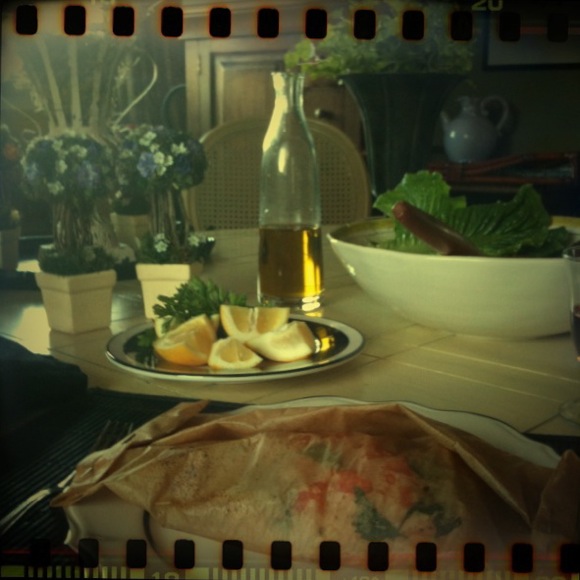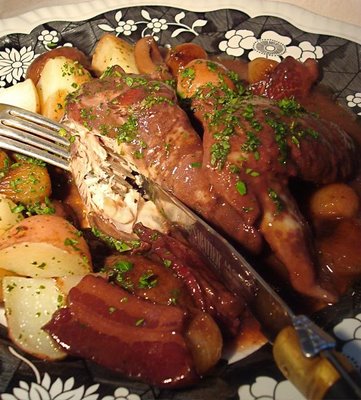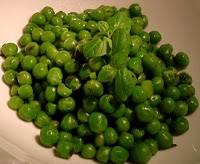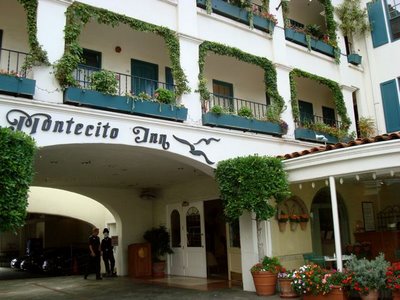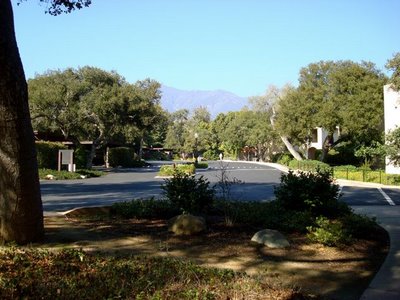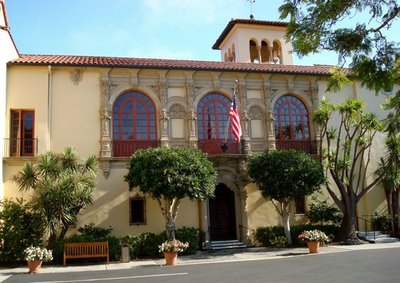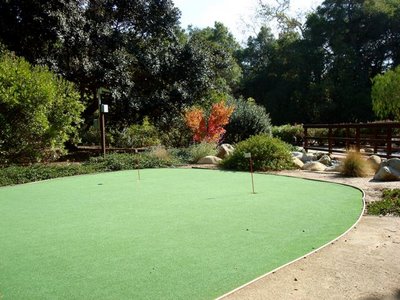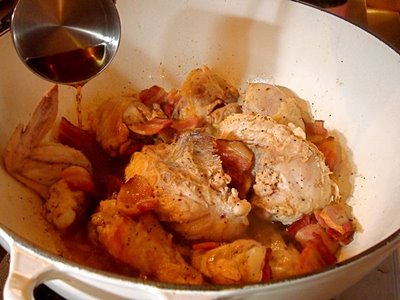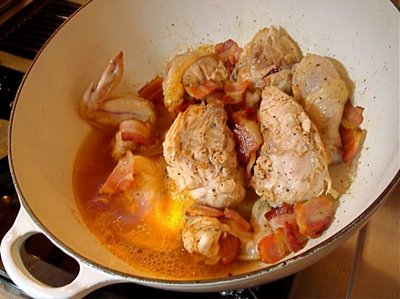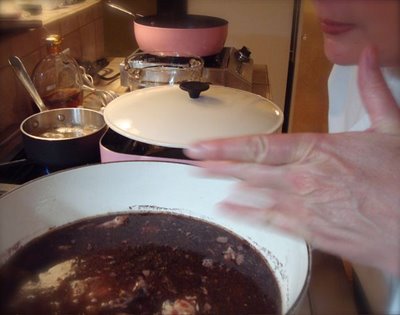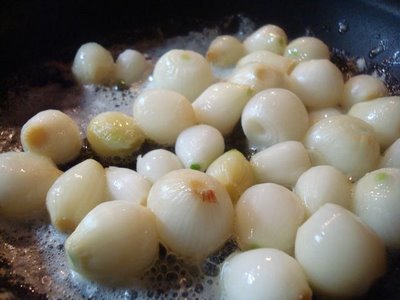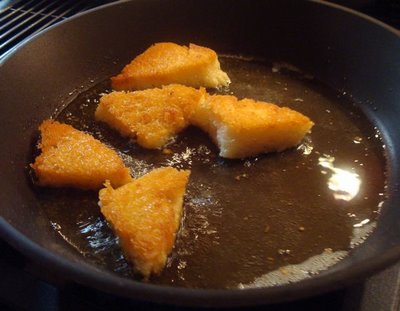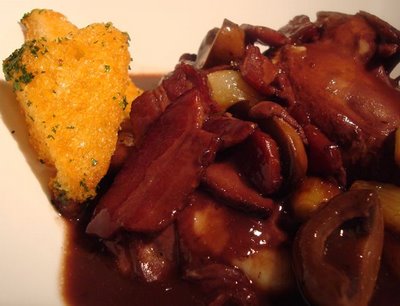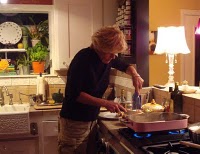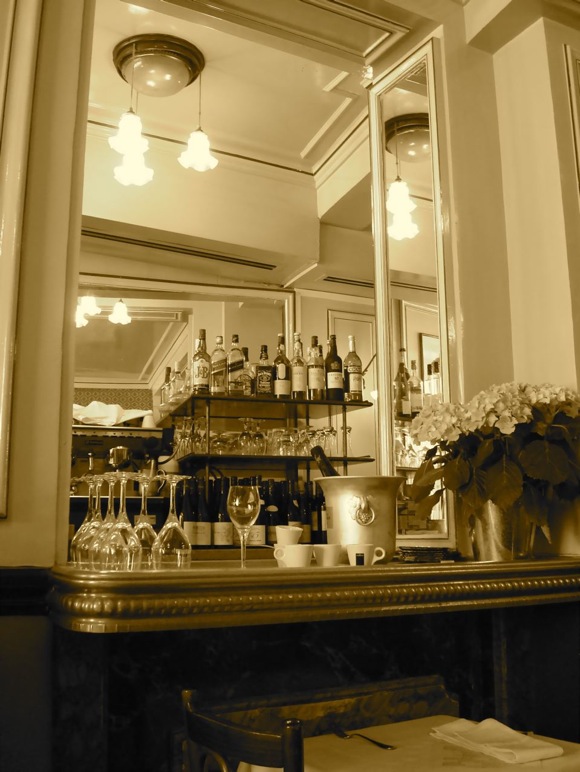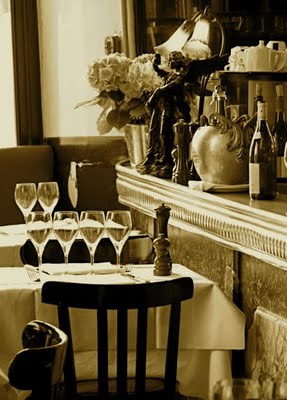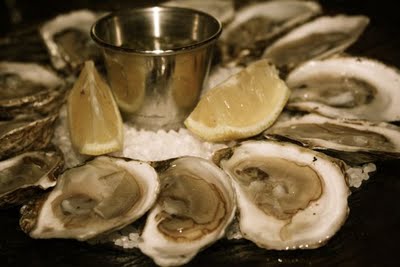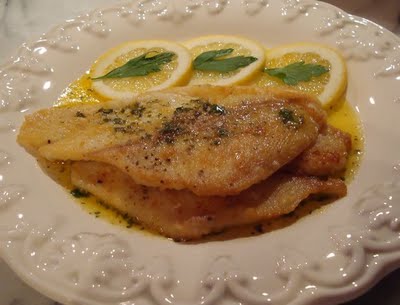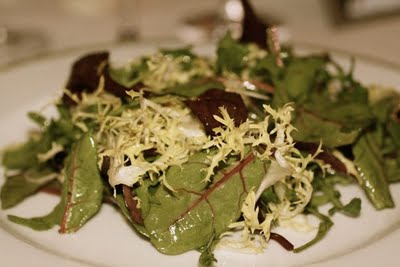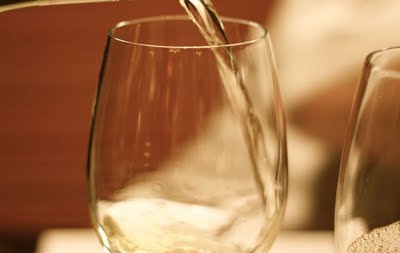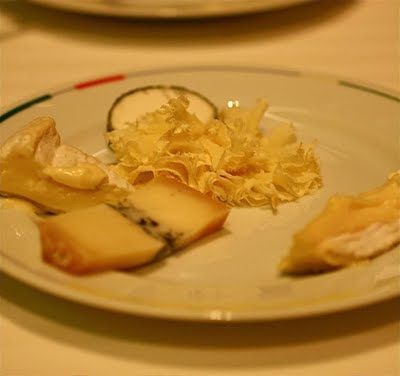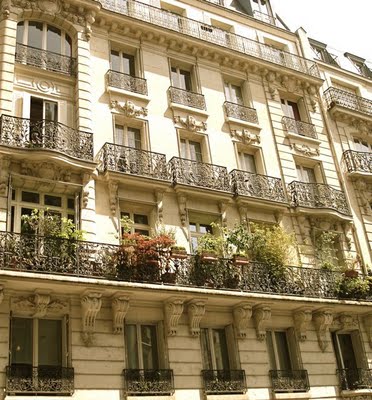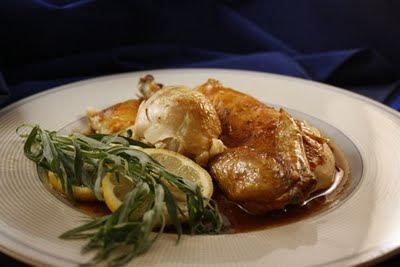
“A well-roasted chicken is the mark of a fine cook. Even among professionals, it is a source of pride to present a shapely chicken, with beautifully colored skin and perfectly done meat, juicy and tender. There is nothing technically difficult about roasting a chicken but there are many approaches to take…for serving either of our chickens, we suggest a delicious pan sauce.” from Julia and Jacques Cooking at Home.
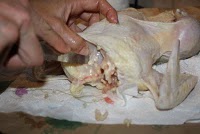
The oven is preheated to 425°F. The chicken is rinsed thoroughly with hot water and dried with paper towels. Fat lumps are removed from the cavity. The small bony protrusions “nubbins” are removed from the wing-tip joints.
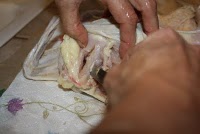
Carving is made easier when the wishbone is removed. This is done by lifting the neck skin and inserting a thin sharp knife into each end of the breast and slicing diagonally along each side of the wishbone.
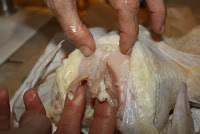
The finger and thumb are used to loosen the bone, pry it out at the top, pull down, wriggling it out.
“A cooking process such as roasting a chicken is inexact – there is no one way that is the right way,” writes Julia. “Just start with a good chicken and pay attention to how you cook it.”
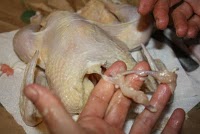 Voilà! The wishbone is removed!
Voilà! The wishbone is removed!
“Not everything I do with my roast chicken is necessarily scientific,” she says. “For instance I always give my bird a generous butter massage before I put it in the oven. Why? Because I think the chicken likes it, and more important, I like to give it.”
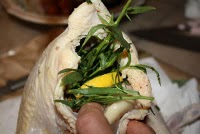
Season the cavity with salt and pepper, stuff it with 4 sprigs of fresh tarragon and 4 thick slices of lemon. Give the lemon a little squeeze as they are inserted. Massage softened butter over the entire chicken skin and salt generously. Squeeze lemon juice over the chicken. “I learned the butter massage when I started cooking for the first time in France and would never give it up.”
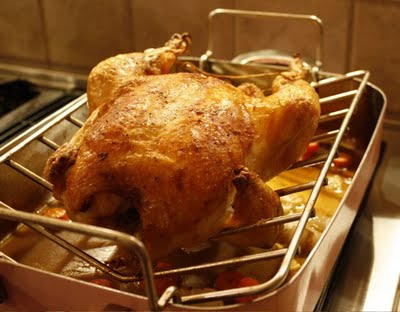
The wings were folded up against the breast and the drumsticks tied together with twine. After roasting for 15 minutes, the heat is lowered to 350°F. The chicken is repeatedly basted with accumulated juices. Rough chopped carrots and onions are added after 30 minutes more. (We got nice caramelized brown bits in the bottom of the pan but had to add some chicken stock to the pan to prevent burning). The chicken is done when the juices run clear. Pierce the breast with the tines of a carving fork, press to bring the juices up, there should be no traces of pink. After about 1 1/2 hours the chicken was removed to a cutting board to rest for 15 minutes.
A Natural Sauce from the Roasting Pan
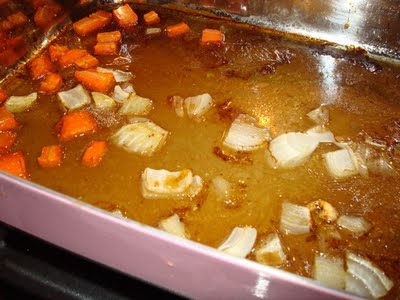
The pan can be tilted to accumulate the juices and fat in one corner, then spoon off the fat.
Julia shares, “Another aspect of roasting that is very important to me – also a lesson from my early years in France – is making the deglazing sauce from the drippings and brown bits in the roasting pan. These brown bits are the precious, caramelized natural juices, their flavor intensified and concentrated by the process of roasting and basting. When you turn these bits into a ‘deglazing’ sauce, you are preserving and essence of pure delicious chicken. There is nothing better to serve with your roast.”
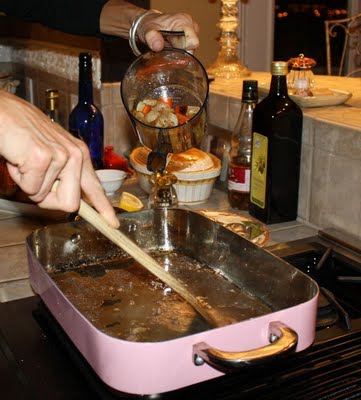
Or do as we did, pouring everything into a gravy separator, then pouring the juices back into the pan, which worked great for removing the vegetables and much of the fat.
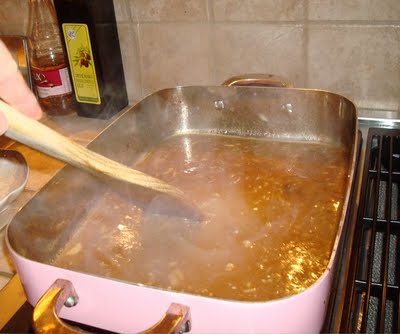
The pan is placed over two medium heat burners, 2 T. minced shallots are added to the pan, stirring briefly. Then 1/3 c. of dry white wine and 2/3 c. chicken stock are added, raise the heat to high, and cook to get the sauce to the right consistency, scraping up all the glazed bits in the pan with a wooden spoon. Taste the sauce, adjust seasoning. Strain to remove bits, add butter for a richer finish (we skipped the butter and found the sauce delightfully rich and flavorful without it).
Lauren carves the bird: Remove the trussing strings and lay the chicken on its side. Cut the skin all around the thigh and leg. Lift the leg and pull away. The thigh will break off at the hip joint. Separate the drumstick from the thigh. Then holding the fork in the breast, cut through the should joint under the wing. Slice through to the outer part of the breast. Remove the breast meat with the wing attached.
Roast Chicken with a Natural Sauce
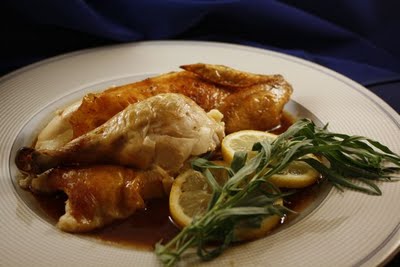
Pour the sauce onto a warm platter.
Top with the carved chicken.
Recipe from:
Julia and Jacques Cooking at Home
Published by Random House 1999
A well-roasted chicken and delicious sauce indeed!
Merci Beaucoup Julia!
Once again, in honor of Julia’s birthday, August 15th, Lisa of
Champaign Taste blog is hosting the Fourth Annual Julia Child Birthday Celebration. Please join us in celebrating Julia, details
here.“Toujours Bon Appétit!”
